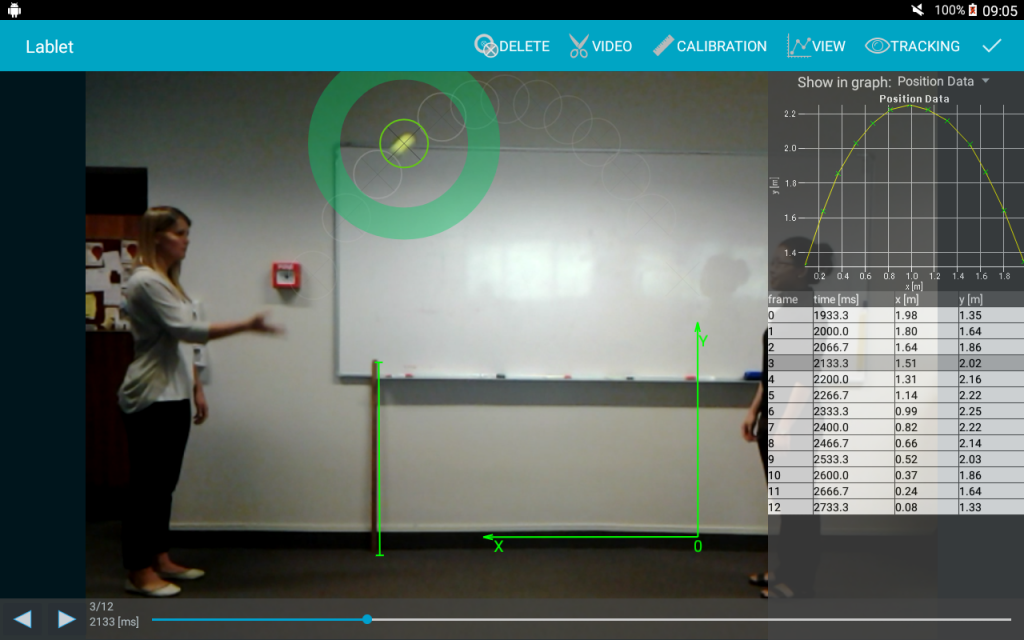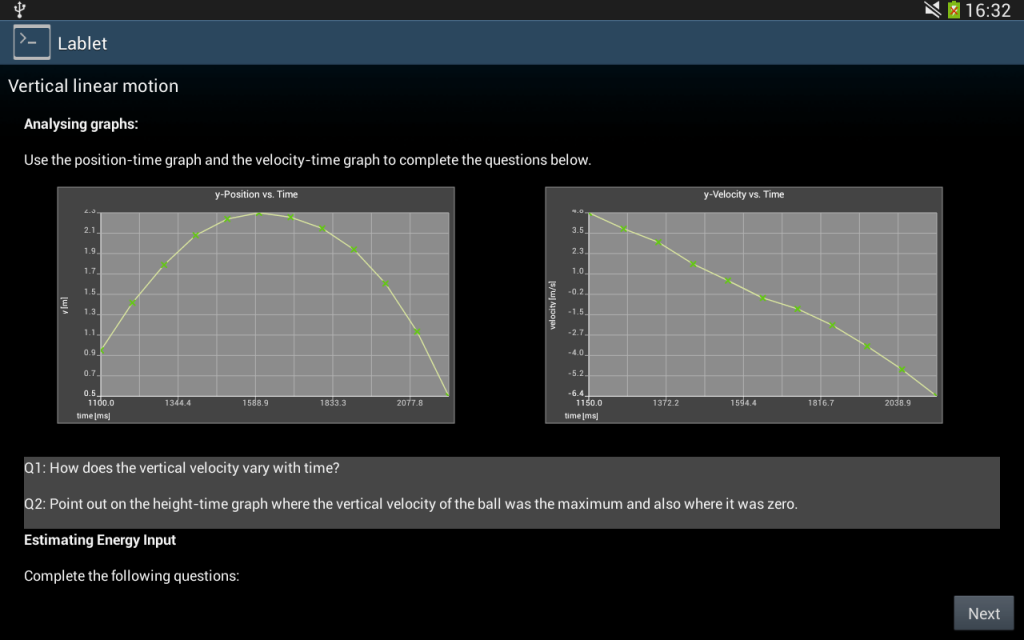Through the mobility and integrated capabilities of Lablet, we invite students to work in groups, plan how they would explore the dynamics of free fall and projectile motion, record their own videos in any open space, and analyse their experimental data.
The simple activity provides an environment to cultivate a rich set of concepts and skills, such as:
- motion in one and two dimensions under uniform acceleration;
- relationships between displacement, velocity and acceleration;
- graphical analysis;
- measurements and uncertainties;
- experimental design;
- team collaboration.
Principles of mechanics are visualised from students’ own data.
After seeing how the recorded motion is translated into graphical form, students delve into describing the recorded motion quantitatively. To reflect the real process of scientific investigations, students use their authentic position data to determine the velocity and acceleration of the moving object. Once students have entered their calculation results, the algorithm verifies the answers by using students’ data as inputs to built-in physics equations.
Automating the calculation-checking process relieves the teaching instructors from routine marking tasks and enables the instructors to interact with students more significantly during class time. Moreover, it is sufficient for students to demonstrate their understanding by completing 1-3 calculations successfully in this instance, and save class time for discussions!
The instructions for this activity is readily available as a default demo in the app (download from Google Play).


